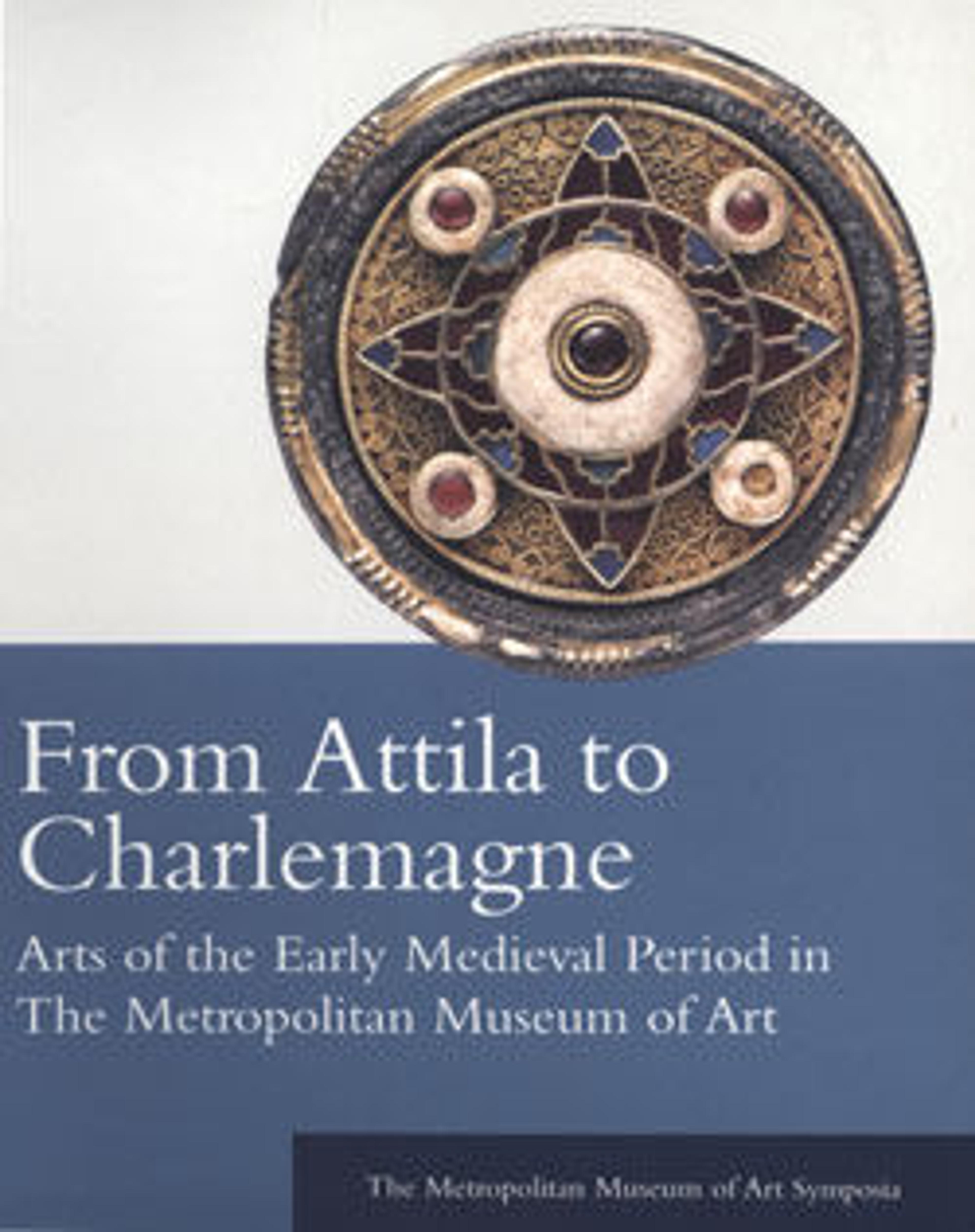Open-Ring Brooch
This silver penannular brooch—a type that was widespread in the British Isles during the Early Christian period—was discovered in June 1854 in a field near Galway, Ireland. Each terminal is decorated with three stylized masks in the form of birds' or bats' heads, enframing a centrally mounted polished amber. The simple, flat-headed pin was mounted backwards when the brooch was found.
Typologically, the brooch is related to a number of Pictish examples found on St. Ninian's Isle in Scotland that, characteristically, have formalized animal or bird masks executed in relief on the terminals. Such brooches appear to have been in fashion toward the end of the eighth century. The Galway brooch is one of three atrributed to the Picts—early inhabitants of Scotland—that were found in Ireland, and demonstrate the close stylisitc affinities between Irish and Pictish forms. Since the brooch can be related to others of Irish origin, dated to the ninth century, this strong connection between the two cultures might be the result of the migration of the type.
The present example is the first penannular brooch to have entered the Metropolitan's collection. The crisp execution of the masks that figure in its decoration makes it among the finest of all the Pictish brooches to have survived.
Typologically, the brooch is related to a number of Pictish examples found on St. Ninian's Isle in Scotland that, characteristically, have formalized animal or bird masks executed in relief on the terminals. Such brooches appear to have been in fashion toward the end of the eighth century. The Galway brooch is one of three atrributed to the Picts—early inhabitants of Scotland—that were found in Ireland, and demonstrate the close stylisitc affinities between Irish and Pictish forms. Since the brooch can be related to others of Irish origin, dated to the ninth century, this strong connection between the two cultures might be the result of the migration of the type.
The present example is the first penannular brooch to have entered the Metropolitan's collection. The crisp execution of the masks that figure in its decoration makes it among the finest of all the Pictish brooches to have survived.
Artwork Details
- Title: Open-Ring Brooch
- Date: early 800s
- Geography: Made in Galway, Ireland
- Culture: Pictish or Irish
- Medium: Silver, cast and partially gilded; amber cabochons
- Dimensions: Overall: 2 1/16 x 3 11/16 x 11/16 x 3 3/4 in. (5.2 x 9.3 x 1.8 x 9.5 cm)
- Classification: Metalwork-Silver
- Credit Line: Purchase, Rogers Fund, and Gift of J. Pierpont Morgan, by exchange, 1981
- Object Number: 1981.413
- Curatorial Department: Medieval Art and The Cloisters
More Artwork
Research Resources
The Met provides unparalleled resources for research and welcomes an international community of students and scholars. The Met's Open Access API is where creators and researchers can connect to the The Met collection. Open Access data and public domain images are available for unrestricted commercial and noncommercial use without permission or fee.
To request images under copyright and other restrictions, please use this Image Request form.
Feedback
We continue to research and examine historical and cultural context for objects in The Met collection. If you have comments or questions about this object record, please complete and submit this form. The Museum looks forward to receiving your comments.
